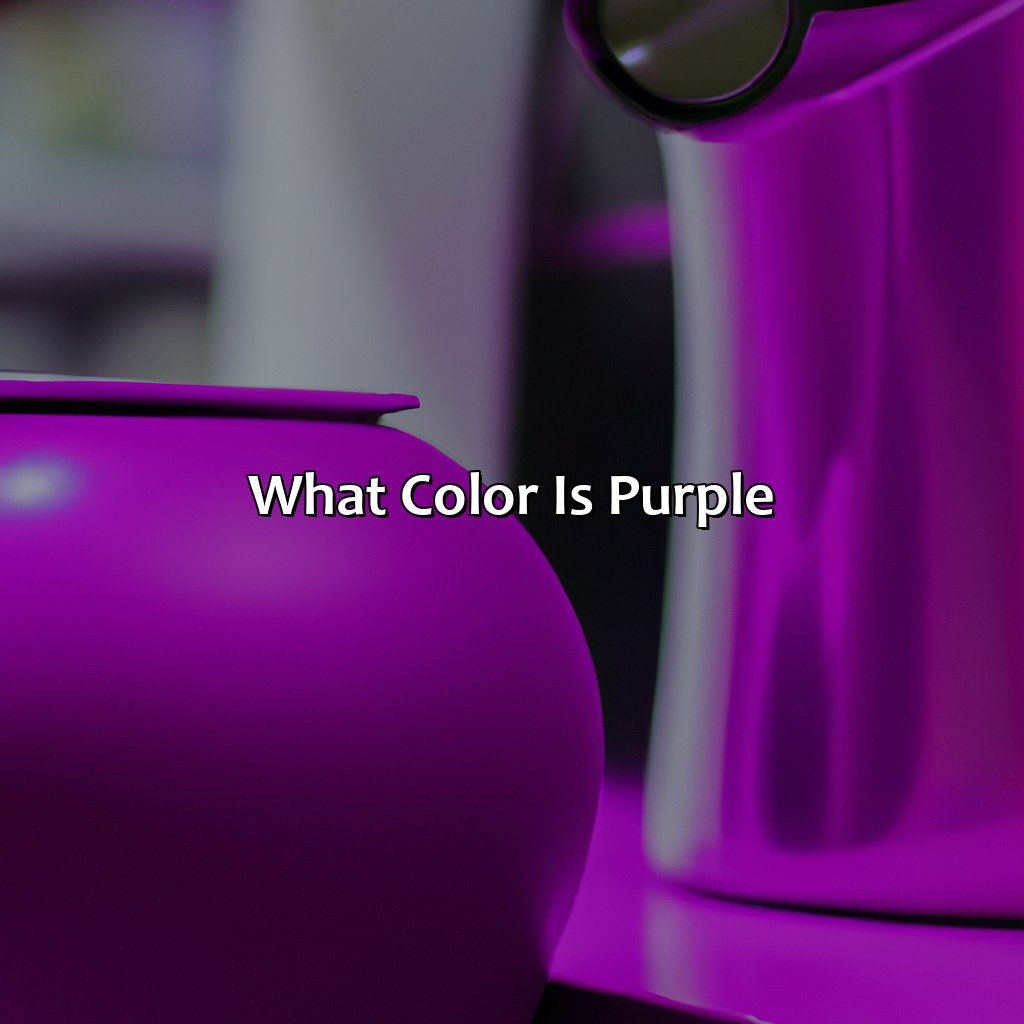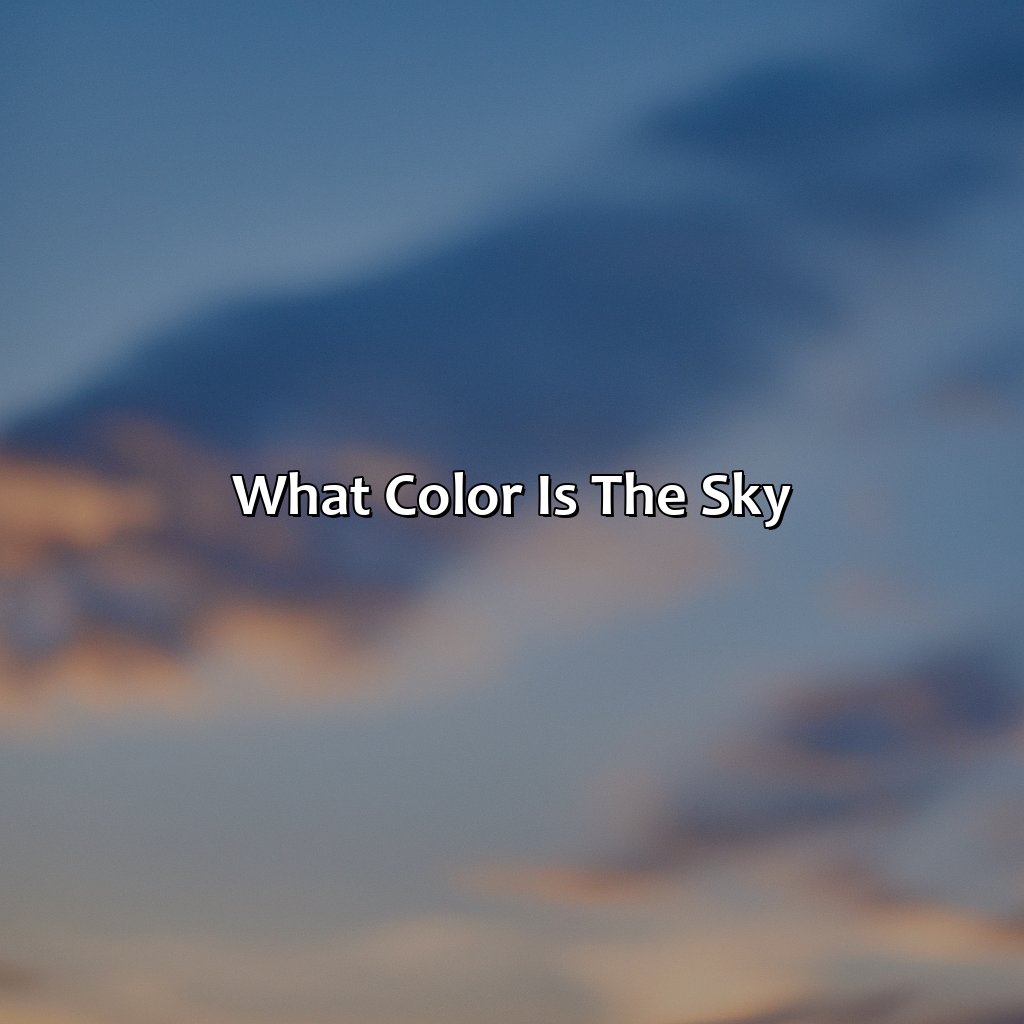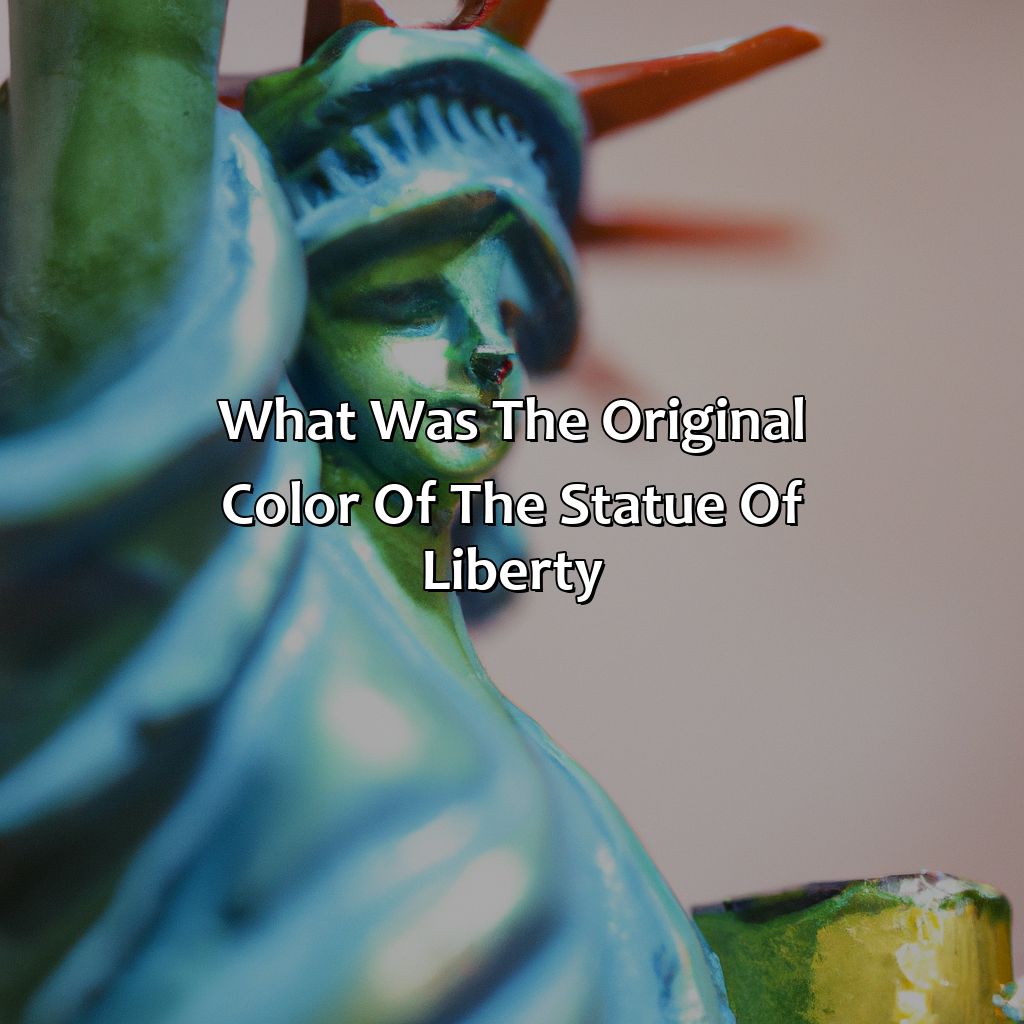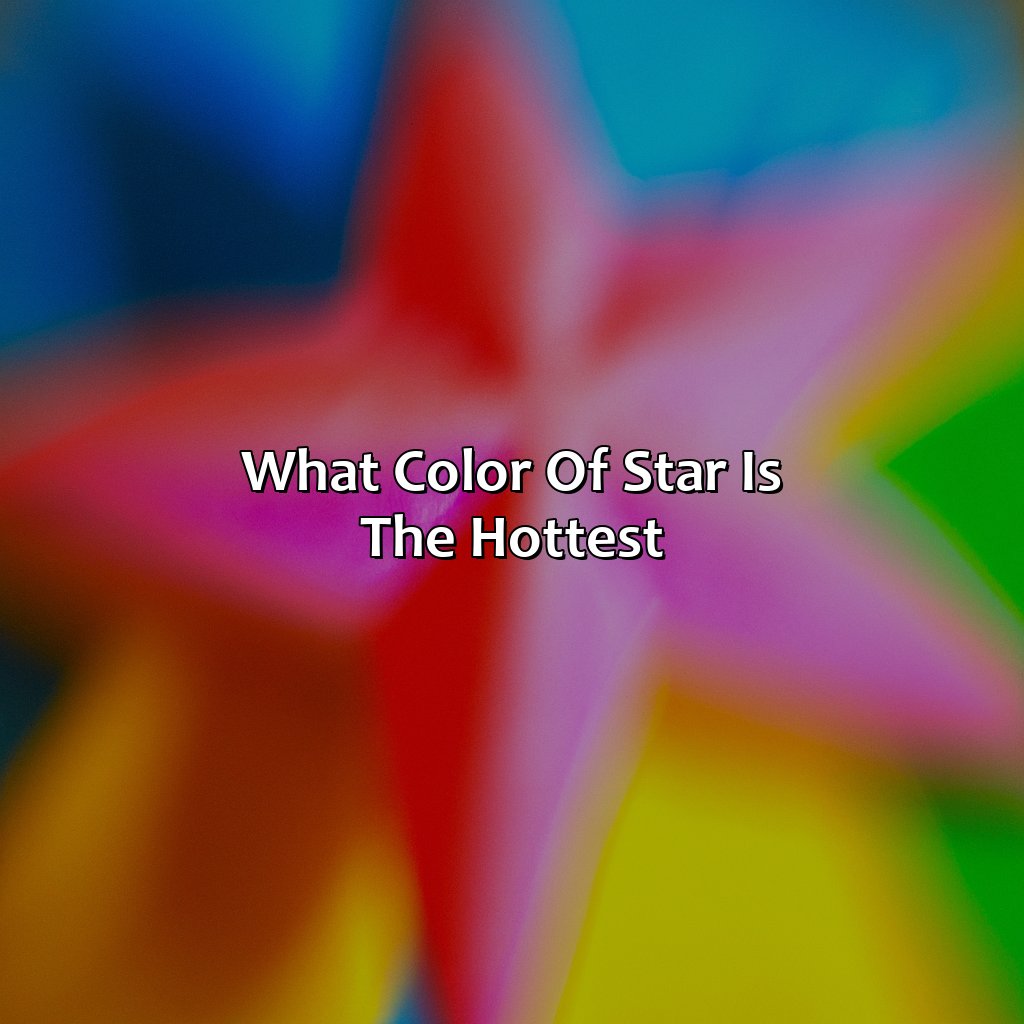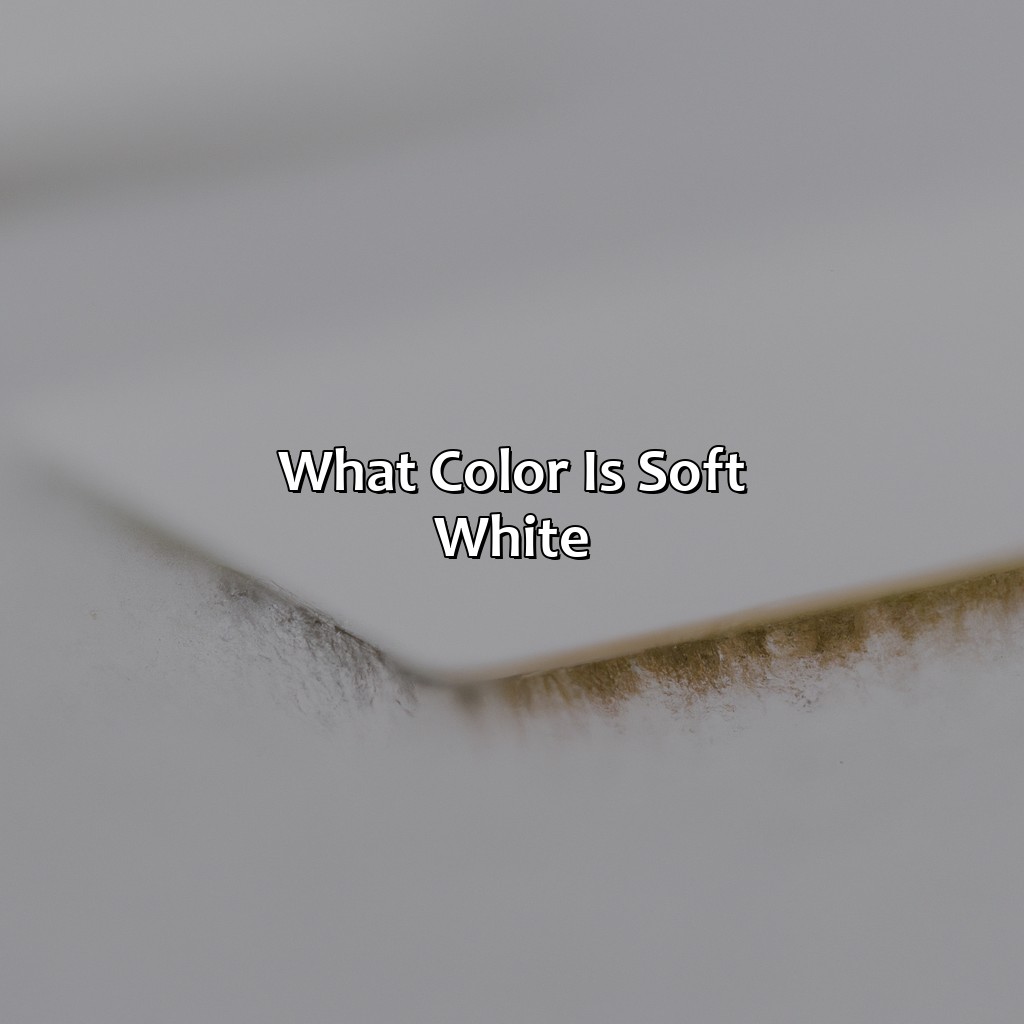Key Takeaways:
- Understanding purple: Purple is a color that has a variety of different meanings and cultural significance across history and around the world. Different shades of purple can have different symbolic interpretations, ranging from luxury and royalty to spirituality and creativity.
- Shades of purple: There are many different shades of purple, including bright, bold shades, pale pastels, and deep, dark colors. Understanding the different meanings and symbolism behind these shades can help inform choices in fashion, interior design, and more.
- The psychology of purple: Purple can have a powerful effect on the mind and body, including its potential to promote healing and relaxation, and to evoke emotions and memories. Understanding the psychological impact of purple can help people use this color in effective and meaningful ways.
Meaning of the color purple
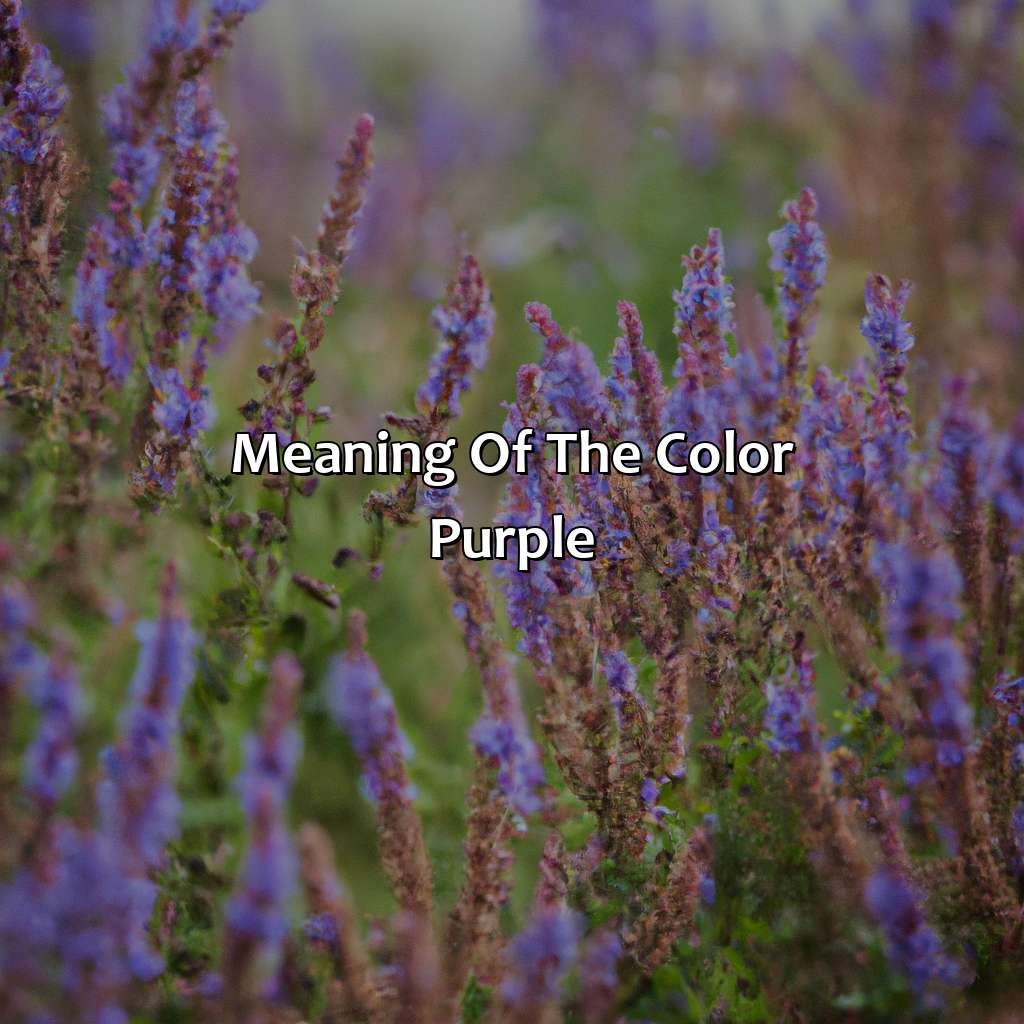
Photo Credits: colorscombo.com by Arthur Smith
To explore the significance of purple, you must:
- Investigate its different shades by looking at a purple color chart and the meaning of lavender.
- Look into the history of purple – its mythological use and dyeing techniques.
- Find out about its cultural importance – in religion, LGBTQ+ pride, and cultural customs.
Definition of purple
Purple, a color that is a blend of blue and red, holds significant meaning in various cultures. It represents royalty, luxury and spirituality. Its different hues range from lavender to lilac, and it has been used since ancient times in art, fashion and religious ceremonies. The color purple derives its name from the ancient Phoenician city of Tyre where purple dye was made using sea snails.
The meaning of purple varies across cultures and timeframes. In ancient Mediterranean civilizations such as Greece and Rome, only royals were allowed to wear garments dyed with true purple due to the expensive nature of the dyeing process. In modern times, shades of lavender have become associated with femininity and elegance.
Apart from being a unique hue on its own, different hues of purple have their own connotations too. For instance, light shades such as lavender represent gracefulness, calmness and relaxation while deeper purples like plum symbolize richness and depth.
Purple is often paired with other colors to create beautiful harmonies that stimulate the eye. Primary colors such as blue and red complement purple well while secondary colors like green add vibrancy to it.
The psychology behind the color links it with spiritual fulfillment, awareness and transformation. Purple also signifies power, leadership abilities – reason why kings commonly wore robes made out this hue in both medieval Europe as well as in Asia.
Symbolically too there is something for everyone that comes attached with purple – whether it’s Diwali’s connection to Hindu gods or Alzheimer’s outreach campaigns using butterfly designs painted in bright hues of purples – making it not just a color but an emotion enabler!
From mythical gods to medieval royalty, purple has been steeped in history and prestige since ancient times.
Historical significance of purple
Purple and its rich history goes back centuries. It has always been a color associated with luxury, wealth, and power. Ancient Egyptians used to extract the color from the mollusk shells found in their coastal waters. They had mastered the craft of dyeing garments with this new-found hue.
In mythology, purple was associated with royalty and deities. The Greeks believed that it was the royal color of the god Zeus, while in Roman times, it was worn by emperors and senators alike.
Dyeing techniques have evolved over time, but one thing has remained constant – purple has always been an expensive color to produce. During medieval Europe, only the rich could afford its luxurious undertones as it was considered a symbol of wealth.
Unique details reveal that during Queen Elizabeth I’s reign, English law prohibited anyone other than close members of her household to wear purple clothing as a sign of loyalty.
Did you know that Tyrian Purple dye from sea snails is worth more than its weight in gold! Yet another example to showcase how precious this color truly is.
Purple may be the color of royalty, but it’s also a big supporter of LGBTQ+ pride events – talk about a diverse hue!
Cultural significance of purple
Purple’s cultural significance is deeply rooted in history and tradition. This hue has been used to represent many things, including nobility, wealth and power. Its use in religious ceremonies dates back centuries, where it symbolizes spirituality and devotion. Furthermore, purple has become an iconic color within the LGBTQ+ community as it represents support for diversity and inclusion.
There are various examples of purple’s relevance in religion. For instance, priests’ robes in ancient Rome and Greece were typically dyed purple. Similarly, this hue represented divinity among Hindu deities like Lord Krishna. In Christianity, purple is famously associated with Lent and Easter, with church altars adorned with purple fabrics.
Moreover, the significance of Purple in LGBTQ+ pride is nothing new but worth mentioning every time. The rainbow flag representing freedom includes a violet stripe symbolizing spirit on either side of the more diaphanous blue and green stripes together representing water.
From vibrant to pastel to dark, these shades of purple are not just colors, they are mood enhancers, paint inspirations and floral delights.
Shades of purple
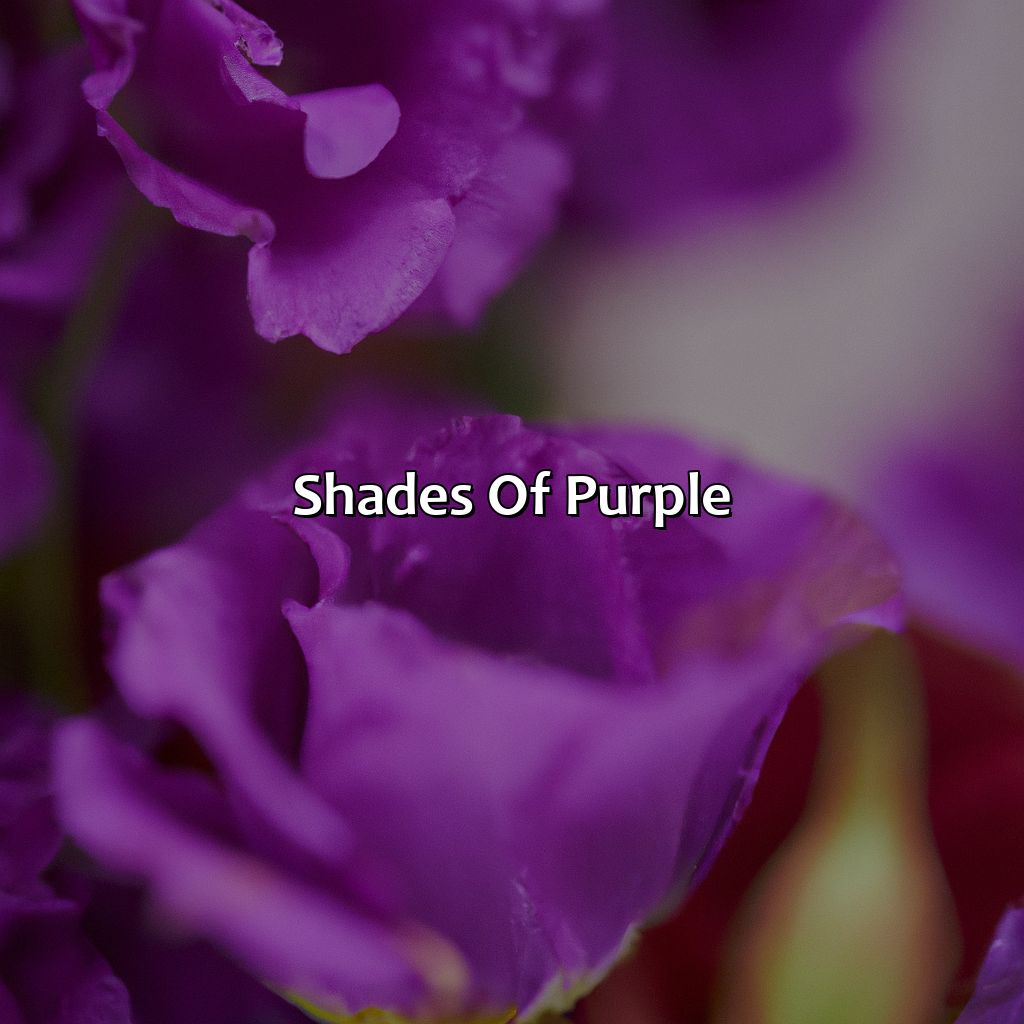
Photo Credits: colorscombo.com by Albert Brown
Want to explore the multiple hues of purple? To find out what they mean, and which ones look best on you? Dive into this section! It’s full of vibrant, pastel and deep shades. Each one has its own unique beauty. Pick the perfect tone for you!
Vibrant shades of purple
Purple is a color that has a wide range of shades, including vibrant tones that are striking and eye-catching. These shades are known for their boldness and energy, making them perfect for use in fashion and design. Vibrant shades of purple include hues like magenta, fuchsia, and electric purple. These colors have high saturation levels and intensity, creating a bright and lively impression.
The vibrancy of these shades is due to the high level of pigment used to create them. Using a larger amount of pigment helps to intensify the color and create a bolder effect that catches the eye. In contrast with pastel or more subdued shades, vibrant purples stand out in any setting.
Vibrant shades of purple are often used in celebrations or events that require a festive atmosphere. They can also be used to add energy or excitement to interior design schemes. These colors pair well with neutrals like white or gray, as well as other bold hues like pink, green, or blue.
Pro Tip: When using vibrant shades of purple in design projects, it’s important to balance them carefully with other elements of the palette to avoid overwhelming the space. Consider using complementary neutral tones and natural materials to ground the color and add warmth.
Pastel shades of purple make me feel like I’m floating in a lavender-scented bubble bath.
Pastel shades of purple
Colors play a significant role in influencing human emotions and perceptions. While vibrant shades of purple are often associated with boldness and drama, pastel shades of purple evoke softness and calm. Pastel shades of purple include Lavender, Lilac, Mauve, Periwinkle, and Thistle. These colors have a restrained tone which is perfect for accenting muted interiors or creating delicate floral arrangements.
These hues have been used in interior design as well as fashion to impart a soothing effect. Pastel shades of purple are associated with spring and summer seasons, making them perfect for softening the vividness of bright colors in fashion trends during those seasons.
Lilac has its root derived from a Flower of the same name that was found widely throughout Europe and Asia at least several centuries back. It was being used quite sometime back just to scent room among royalty in Japan’s Imperial Court.
Pastel shades of another color are often recommended when pastels like pale pink or baby blue seem too juvenile for some designs. They can be paired harmoniously with other pastel hues or darker tones to create subtle visual interests.
Dark shades of purple are like my sense of humor, only appreciated by a select few.
Dark shades of purple
The deep shades of purple evoke a feeling of mystery and sophistication. These hues are darker than lavender and generally have a higher concentration of blue pigment, thus creating an air of mystery around them. The rich, darker tones elicit feelings of stability, strength, and luxury.
Dark shades of purple include eggplant, royal purple, indigo, plum, and aubergine. Eggplant is found in nature and took on the name from the vegetable. Royal purple was once reserved for royalty due to its high cost associated with deriving it from snail shells. Indigo is often confused with navy blue and has been used since ancient times to dye fabrics. Plum has red undertones while aubergine is typically more reddish-purple.
It’s important to keep in mind that dark shades tend to be less lively than their lighter counterparts. When combining with other colors or decor elements, one might find that larger pieces in these hues can sometimes overpower light or small elements.
Pro Tip – For an elegant look when using dark shades of purple as the primary or focal color, balance its heaviness by adding lighter pastels of lavender or lilac on accent wall areas or secondary furniture pieces like chairs or even throw pillows.
Pair purple with its color compliments to create a stimulating effect on the brain and showcase your creative and bold personality.
Complimentary colors to purple

Photo Credits: colorscombo.com by Timothy Thomas
Purple’s perfect partner? To understand, we must examine its complimentary colors. Primary? Secondary? Let’s take a closer look and see how this hue affects the human brain and personality!
Primary colors that compliment purple
Purple is a unique color that can be paired with different shades and hues to bring out different impressions. A variety of primary colors complement purple beautifully in different contexts.
- Red: Red complements purple due to their shared warm undertones. Adding red to purple creates a vibrant, eye-catching look.
- Yellow: Yellow, a warm tone also compliments purple well by creating an intriguing contrast. Pairing yellow with lighter shades of purple produces a soothing effect on the eyes.
- Blue: The combination of blue and purple creates a dramatic effect that draws attention. Blue’s cool tones balance the warmth of purple creating an elegant, modern look.
- Green: Greens in warmer shades such as olive or forest green are good pairings with darker shades of purple, while mint green creates a fresh spring-like theme when matched with lighter purples.
Furthermore, understanding which secondary colors complement primary colors is also crucial in achieving the perfect color balance.
In fact, incorporating primary colors that complement purple can influence our emotions positively by giving us feelings of stability and harmony. It stimulates creativity, enlightenment, and passion whenever placed in any creative design.
Did you know that greeting cards company Hallmark identified Purple Heart Day as one of their annual greeting card events?
Pair purple with its complimentary secondary colors for a jaw-dropping color scheme that even Prince would approve of.
Secondary colors that compliment purple
Secondary Hues to Match Purple
The optimal approach to finding the most suitable color combinations with purple is to focus on the secondary hues that complement it. There are a variety of shades and tones when it comes to adding the right mix of colors that will offset and highlight your lavender aesthetic.
- Green complements purple by providing a sharp contrast in different shades, which creates an overall balance for a fresh and vibrant effect.
- Yellow is another excellent secondary color that pairs well with purple. By incorporating yellow, contrasting tints break even more strikingly while providing a lightness feel to the imagery.
- Orange is the third color you can experiment with; it gives warmth as well as illuminates the typical intensity of purple, creating an eclectic atmosphere suitable for various design applications.
As previously discussed, understanding how different colors interact with each other is essential in choosing accurate complementary hues. It isn’t enough to pick any secondary color that looks great with purple; it must be seamlessly integrated into your overall design plan.
Suggestions:
To create dynamic designs featuring this beautiful combination of primary and secondary hues, consider experimenting with combinations like purple and green for website designs or infographics. To create more playful marketing materials like flyers and posters, use yellow or orange against a backdrop of deep purple to give vibrancy or energy to your brand’s visuals.
Whether you need a calming presence or a spiritual lift, purple has got your back – and your mind – covered.
Psychology of purple

Photo Credits: colorscombo.com by Christian Torres
We will explore the psychology of purple and how it affects our emotions, memory and spirituality. We will look at how purple is a calming color and a spiritual symbol. Plus, its effects on the mind and body. Also, color therapy and purple light therapy use it. Lastly, purple has become associated with luxury and royalty.
Effects of purple on the mind and body
Purple – A Healing Color for the Mind and Body
Purple is not just a color, but rather a healing color that has been used for centuries in color therapy. Its effects on the mind and body are both physical and emotional.
In color therapy using purple light, it is believed to promote relaxation, calmness, and improve sleep quality. It has also been shown to reduce stress and anxiety levels. Purple can also have physical benefits such as improving circulation, reducing inflammation, and easing pain.
Furthermore, purple is associated with spirituality and intuition. It is said to enhance one’s ability to connect with their inner self and promote creativity.
To experience the benefits of purple color therapy, you could try incorporating more purple into your surroundings. This could be through decorating your space with purple decor or wearing purple clothing. You could also meditate or do yoga under purple light to feel its calming effects.
Overall, the power of purple goes beyond aesthetics, making it a valuable tool in promoting overall wellness for the mind and body.
Even kings and queens can’t resist the allure of the regal color purple.
Purple as a symbol of luxury and royalty
The regal hue of purple has long been associated with royalty, wealth, and luxury. Throughout history, people have seen purple as a symbol of power and status. This association stems from the fact that dyeing fabrics with purple was once an expensive and time-consuming process, making it reserved for only the wealthiest individuals.
In addition to being a luxurious color, purple also holds cultural significance in many parts of the world. In ancient Rome, for example, only emperors were allowed to wear purple clothing, while in Japan, purple is still considered to be a noble color.
Furthermore, the symbolism of purple extends beyond its associations with wealth and power. Many cultures associate the color with spirituality and mysticism. For instance, in Western culture, the term “purple prose” refers to overly ornate language used in romantic or mystical writing.
One notable example of the use of purple as a symbol comes from Ancient Greece. The poet Homer described the ocean as “wine-dark”, which some interpret as an early reference to what we now consider to be the color purple.
Overall, while its historical background is rooted in wealth and luxury, eastern thought associates it with peace and harmony; these perceived meanings underscored by its versatility on so many spectrums allow humanity’s history with this eccentric shade of pink make it for much more than just another hue on the spectrum. From art to literature to music, purple is the color that speaks volumes without uttering a word.
Symbolism of purple
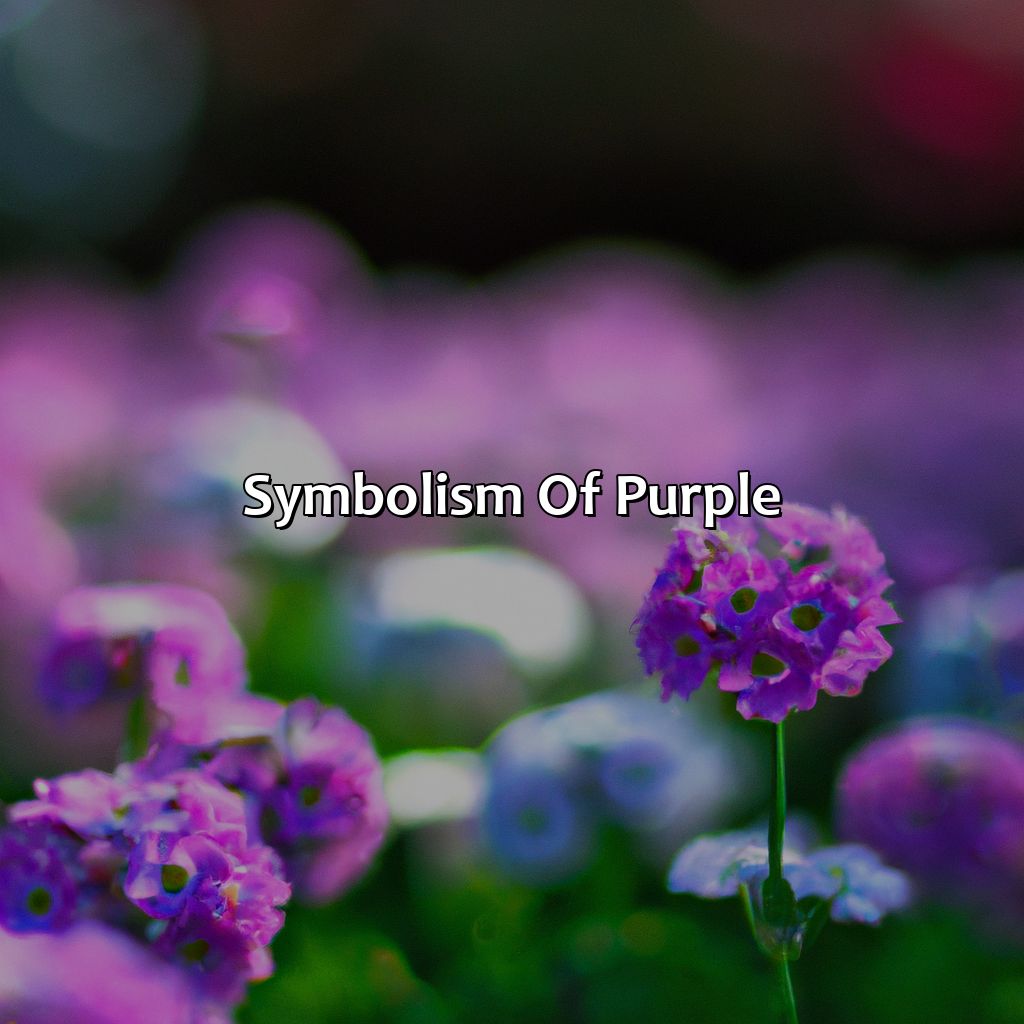
Photo Credits: colorscombo.com by Justin Hill
To uncover the symbolism of purple in various art forms, such as art, literature, and music, explore the “Symbolism of Purple” section. This section examines how purple is utilized in different cultures and its implications. Dive into the “Symbolism of Purple in Different Cultures” subsection to discover the cultural connotations associated with purple. Additionally, the “Purple as a Symbol for Various Causes and Movements” subsection will explore the multiple uses of purple as a symbolic hue.
Symbolism of purple in different cultures
Purple has deep symbolism across various cultures, representing different meanings and beliefs. From ancient traditions to modern-day movements, purple is a color that holds significance. In some cultures, purple is associated with royalty, wealth, and power, whereas in others it symbolizes mourning or spirituality. The symbolic meaning of purple can vary greatly depending on the context and cultural background.
Purple has a rich history of symbolism in different cultures. In ancient times, creating dyes for fabrics was an expensive and intricate process, often reserved for the wealthy and powerful. Purple dye was especially prized as it required vast quantities of rare sea snails to produce. In Ancient Rome, emperors wore purple robes as a symbol of their authority and status. In Japan, purple was a symbolic color for the Emperor’s family during the Heian period.
Each culture assigns unique meanings to purple based on their specific traditions and beliefs. In many African cultures, purple signifies nobility or wisdom. Meanwhile, in Thailand, yellow is traditionally reserved for royalty while purple represents mourning.
Purple is also commonly used as a symbolic color in various causes and initiatives worldwide such as domestic violence prevention (Purple Ribbon), LGBT rights (The Lavender Menace) & Alzheimer’s awareness month (Wear Purple).
In summary, throughout history and across cultures around the world, the symbolism of purple has varied greatly but always held significant importance in conveying messages ranging from luxury & nobility to religion & activism. Purple may be the color of royalty, but it’s also the hue of various causes from Alzheimer’s awareness to domestic violence prevention.
Purple as a symbol for various causes and movements
Purple as a Symbol for Social Justice Movements
Signifying unity, justice, and activism, purple has been frequently used as a symbol for various social justice movements.
- In the United States, purple is associated with the feminist movement and its struggle for women’s rights. It represents solidarity among women who are fighting against gender inequalities.
- During the HIV/AIDS epidemic in the 1980s and 90s, the red ribbon was paired with a purple background to represent support for those affected by AIDS and to promote awareness about its prevention.
- Purple became an integral part of the Black Lives Matter movement after Trayvon Martin’s death. Since then, it has been used widely to voice protests against racism and police brutality against Black individuals.
Besides these causes mentioned above, purple has also been observed as a symbol of support and advocacy towards Alzheimer’s disease awareness and cancer survivorship.
However, throughout history, various shades of purple have also been a symbol of royalty or nobility due to its scarcity. In some cultures like Japan and Thailand, it is symbolic of mourning or death.
Five Facts About the Color Purple:
- ✅ Purple is a color that is created by blending blue and red together. (Source: Color Matters)
- ✅ The pigment used to create the color purple was originally very rare and expensive to produce. (Source: Smithsonian Magazine)
- ✅ In ancient times, purple fabric was reserved for use by royalty and the wealthy due to its high cost. (Source: Live Science)
- ✅ The artist Prince was known for his love of the color purple and it became synonymous with his brand. (Source: CNN)
- ✅ In color psychology, purple is associated with creativity, luxury, and spirituality. (Source: Verywell Mind)
FAQs about What Color Is Purple
What is the exact color of purple?
As a secondary color between red and blue, purple can vary in hue and saturation. It can range from a reddish purple to a bluish purple.
What colors make up purple?
Purple is made up of both red and blue. Depending on the exact shades of these colors, different variations of purple can be created.
Is purple a warm or cool color?
Purple can be considered a cool color due to its association with blue, which is also considered a cool color. However, a reddish purple can also have warm undertones.
What emotions does the color purple evoke?
Purple is often associated with luxury, royalty, creativity, and spirituality. It can evoke feelings of mystery, sophistication, and power.
How does light affect the color of purple?
Light can have a significant effect on the appearance of purple. Different lighting conditions can cause the color to appear warmer or cooler, or make it appear more or less vibrant.
What are some common uses of the color purple?
Purple is often used in branding for luxury and high-end products, as well as in spirituality and wellness industries. It is also a popular color for clothing, particularly in women’s fashion.
